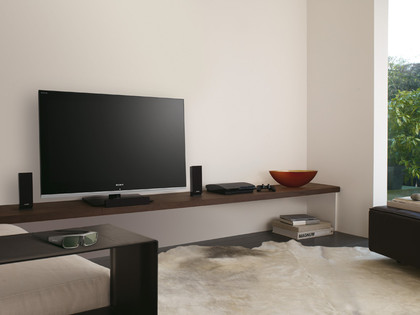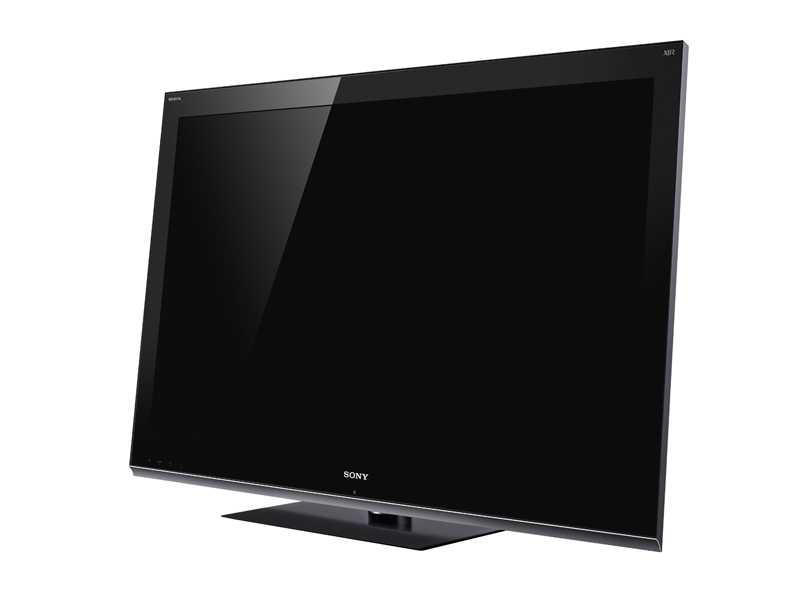Why you can trust TechRadar

Sony's 'Monolithic' design boils down to a gloss black shell that is not substantially different to other manufacturers' efforts and veers towards austerity and seriousness, rather than breathtaking beauty.
The lipped rear panel includes fewer connections than you might expect; a lone RGB Scart sits alongside a brace of HDMIs, optical digital audio, Ethernet, and an RF aerial input. That's a scant return, though the design does mean that if you do hang the 40LX903 on a wall, you won't be able to switch and ditch cables quite so easily as on most TVs – which is why Sony has fitted almost a full set of connections on a panel hidden just around the left-hand side of the screen.
There are two more HDMIs (taking the total count to a respectable four), inputs for PC video (VGA) and PC audio, a Common Interface slot (for adding subscription TV channels to Freeview via a viewing card), a USB slot, a set of component video inputs and some analogue audio video jacks.
Two pairs of 3D glasses are included with the 40LX903, which is more generous than some, but arguably still too few in light of the cost – £99.01 each, to be precise – of extra pairs, the absence of compatibility between rival brands' 3D kit and the telly's already enormous tag.
Elsewhere, it's nice to see DLNA networking included here as well as a media-savvy USB slot – though file support is limited.
Sony seems to have realised it could use its digital content clout and has put together surely the finest collection of streaming options on its burgeoning Bravia Internet Video platform.
Current page: Sony Bravia KDL40LX903: Features
Prev Page Sony Bravia KDL40LX903: Overview Next Page Sony Bravia KDL40LX903: PictureJamie is a freelance tech, travel and space journalist based in the UK. He’s been writing regularly for Techradar since it was launched in 2008 and also writes regularly for Forbes, The Telegraph, the South China Morning Post, Sky & Telescope and the Sky At Night magazine as well as other Future titles T3, Digital Camera World, All About Space and Space.com. He also edits two of his own websites, TravGear.com and WhenIsTheNextEclipse.com that reflect his obsession with travel gear and solar eclipse travel. He is the author of A Stargazing Program For Beginners (Springer, 2015),

